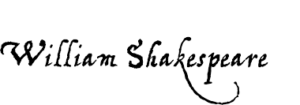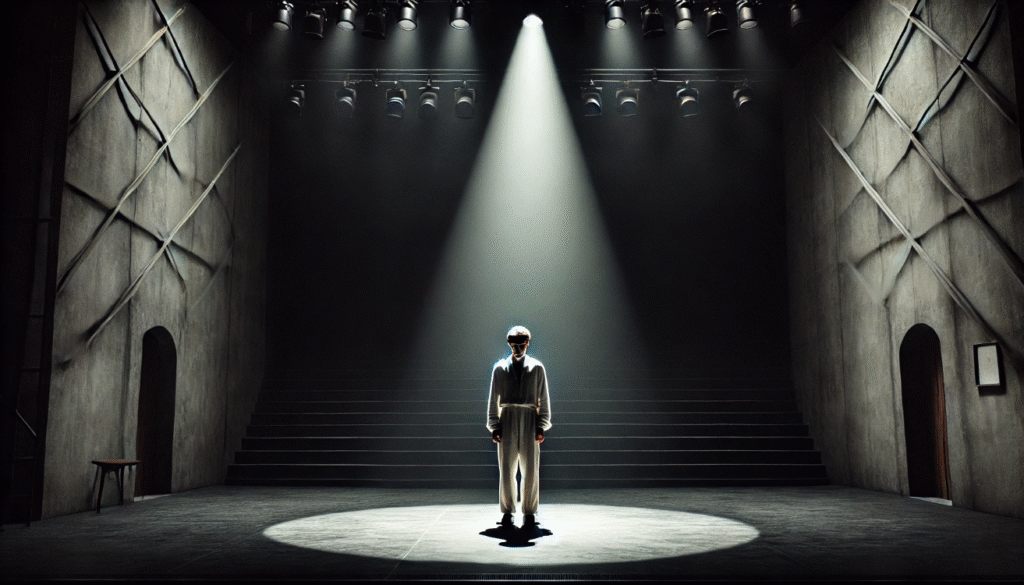The evolution of soliloquies in Shakespeare’s plays is widely regarded as a master in portraying human emotions through his plays. One of the key techniques he employed to achieve this was the use of soliloquies. The evolution of soliloquies in Shakespeare’s play sarecrucial in revealing the internal conflicts and emotions of the characters, offering a glimpse into their deepest thoughts and feelings. This thesis will explore how soliloquies function as a window into the emotional and psychological struggles of Shakespeare’s characters, and how they contribute to the overall depth and complexity of his works.
The Role of Soliloquies in Shakespeare’s Plays:

The evolution of soliloquies in Shakespeare’s plays is a dramatic device in which a character speaks aloud their inner thoughts and feelings, typically while alone on stage. The purpose of a soliloquy is to provide the audience with insight into the character’s motivations, emotions, and internal conflicts. It allows the audience to gain a deeper understanding of the character and their perspective on the events unfolding in the play. The evolution of soliloquies in Shakespeare’s plays innovative use of soliloquies set him apart from his contemporaries. The evolution of soliloquies in Shakespeare’s plays to explore the complexities of his characters’ inner lives, often revealing their inner turmoil and moral dilemmas. This allowed for a more nuanced and psychological portrayal of his characters, which was groundbreaking for the time.
Internal Conflict as a Core Theme:
Internal struggles play a significant role in driving Shakespearean drama by adding depth and complexity to the characters and their storylines. The universal appeal of characters grappling with moral, emotional, or existential dilemmas allows audiences to connect with the struggles and dilemmas faced by the characters on a personal level. This creates a sense of empathy and investment in the outcome of the characters’ internal conflicts. Examples of internal conflicts in Shakespearean drama include the classic themes of duty versus desire, morality versus ambition, and love versus loyalty. These timeless dilemmas resonate with audiences across cultures and time periods, making the characters and their struggles relatable and compelling.
Analysis of Key Soliloquies Showcasing Internal Conflict:
Hamlet:
“To be or not to be” is a famous line from William Shakespeare’s play Hamlet. It reflects the character’s contemplation of life, death, and existential dread. It’s a deep and thought-provoking question that has been the subject of much philosophical and literary exploration. It raises important questions about the nature of existence and the human experience.
Macbeth:
Yes, Macbeth’s famous soliloquy in Act 2, Scene 1 of Shakespeare’s play “Macbeth” reflects the protagonist’s inner turmoil as he grapples with his ambition, guilt, and morality. The line “Is this a dagger which I see before me” serves as a metaphor for Macbeth’s psychological state, as he questions whether the dagger he sees is real or a figment of his imagination. This moment captures the internal conflict that drives the character’s descent into darkness and moral decay.
Othello:
In this line from Shakespeare’s Othello, the character Othello is reflecting on the cause of his intense emotions. He is grappling with feelings of jealousy, love, and a sense of moral justification for his actions. This line captures the inner turmoil and conflict within Othello as he struggles to make sense of his emotions and the choices he has made.
Romeo and Juliet:
In Juliet’s soliloquy in Act 2, Scene 2 of Shakespeare’s Romeo and Juliet, she grapples with the conflict between her love for Romeo and the societal expectations that come with their family feud. She questions the significance of names and labels, ultimately declaring that she is willing to give up her family name in order to be with Romeo. This soliloquy highlights the timeless theme of love versus societal expectations and the sacrifices that individuals may have to make for their love.
Psychological Depth in Shakespeare’s Characters:

Soliloquies offer insights into a character’s psyche by allowing the audience to hear the character’s inner thoughts and emotions. This form of monologue provides a direct window into the character’s internal conflict, giving the audience a deeper understanding of their motivations, fears, and desires. Throughout the evolution of a play, soliloquies can reveal the character’s changing internal struggles and the development of their psychological state. This allows the audience to see how the character’s thoughts and emotions evolve over time, adding depth to their portrayal. Shakespearean characters such as Hamlet, Macbeth, and Iago are known for their complex psychological portraits.
The Dramatic Function of Internal Conflict:

Internal conflict advances the plot by creating tension and generating audience empathy through soliloquies. These moments allow the audience to gain insight into the character’s inner struggles and dilemmas, which adds depth to the character and drives the plot forward. In comparison to dialogues and monologues, soliloquies provide a unique opportunity for characters to reveal their innermost thoughts and emotions, further developing the story and advancing the plot.
Thematic Exploration Through Soliloquies:

Shakespeare’s soliloquies are rich with themes of power, love, betrayal, and existentialism, which continue to resonate with contemporary audiences. The exploration of power dynamics and the struggle for control are universal themes that continue to be relevant in today’s society. Love and betrayal are timeless themes that touch on the complexities of human relationships and the emotions that come with them. Additionally, the existential questions raised in Shakespeare’s soliloquies, such as the nature of existence and the search for meaning, continue to captivate audiences across generations.
Shakespeare’s Language and Literary Devices:
In Shakespeare’s plays, soliloquies serve as a window into the inner thoughts and emotions of the character. The use of blank verse, with its consistent iambic pentameter, reflects the internal rhythm and meter of the character’s emotional state. Each soliloquy is uniquely styled to capture the individual turmoil of the character, using vivid imagery, metaphor, and rhetorical questions to convey their inner struggles. This stylistic uniqueness allows the audience to fully immerse themselves in the character’s emotional journey, making the soliloquy a powerful tool for understanding the complexity of human emotions.
Modern Interpretations of Soliloquies:

Soliloquies are performed in a way that emphasizes the internal struggles of a character by allowing the audience to see into the character’s thoughts and emotions. This is often done through a reflective and introspective delivery, where the character speaks directly to the audience, revealing their inner turmoil and conflicted emotions. Modern psychological and literary analyses of soliloquies have highlighted the significance of these monologues in portraying the complexity of human psychology and the inner workings of the mind. They are seen as a powerful tool for exploring the depths of a character’s psyche and delving into their internal struggles, providing valuable insights into the human experience.
Soliloquies in Shakespearean plays serve as a window into the inner struggles of the characters. Through these monologues, we gain insight into their deepest thoughts and emotions, allowing us to empathize with their internal conflicts. The soliloquies reveal the complexity of human nature and the universal experience of grappling with inner turmoil. Shakespeare’s mastery of language and psychology has left an enduring legacy, as his characters continue to resonate with audiences today. The universal relevance of internal conflict is a testament to the timelessness of Shakespeare’s work, as we continue to find parallels between his characters’ struggles and our own.














